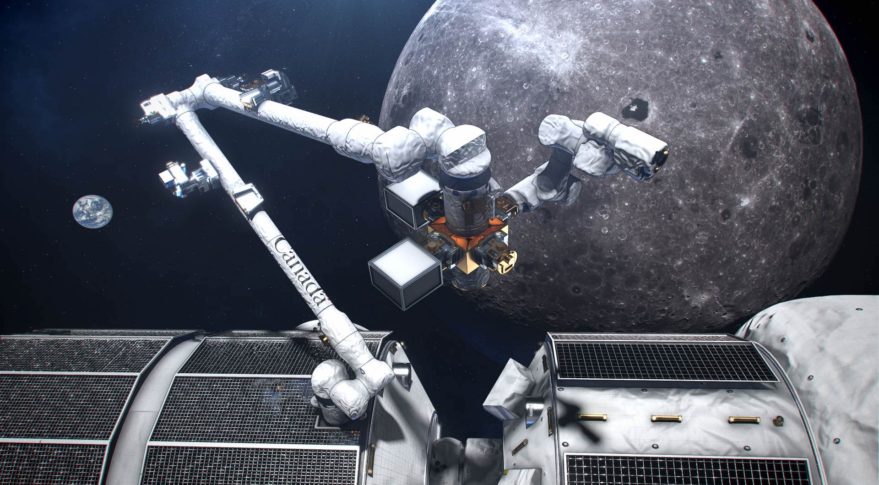MDA to build robotic arm for lunar Gateway
MDA to build robotic arm for lunar Gateway

WASHINGTON — The Canadian Space Agency announced June 26 it plans to award a contract to MacDonald, Dettwiler and Associates (MDA) to build a robotic arm that will be Canada’s contribution to the lunar Gateway.
The deal covers development of what the agency calls Canadarm3, which is an overarching robotic system for the Gateway rather than a single robotic arm. It features one arm 8.5 meters long as well as a smaller but more dexterous second arm. The system also includes set of specialized tools and incorporates artificial intelligence technologies to enable operations without human controllers.
The agency did not disclose the value of the contract, which has yet to be formally awarded. It also did not give a firm schedule for developing Canadarm3. “The Canadian Space Agency is actively working with its partners on defining Gateway architecture and determining when Canadarm3 will be needed in the mid-2020s,” the agency stated. “The exact launch date depends on the overall Gateway schedule.”
The selection of MDA, though, is not surprising. The company built the original Canadarm for the space shuttle and the Canadarm2 and Dextre manipulator currently operating on the International Space Station. MDA, previously part of U.S.-based Maxar, was sold to Canadian investors in a deal that closed in April.
Canadian government officials pitched the project as a means of keeping the country at the forefront of space robotics. “Our government is committed to the future of space exploration and ensuring Canada remains a global leader in space robotics,” Navdeep Bains, minister of innovation, science and industry, said in the statement about the contract. “Our commitment to contribute Canadarm3 to the Lunar Gateway will generate high-quality jobs and economic benefits for Canadians while ensuring that our space industry continues to lead and grow.”
The Canadarm3 program will also incorporate a broader government program called the Industrial and Technological Benefits Policy, which will promote the use of other Canadian companies as part of the supply chain for the program.
The Canadian government announced its intent to cooperate on the lunar Gateway in February 2019 by building Canadarm3, making it the first country to commit to participating in the NASA-led Gateway program. Prime Minister Justin Trudeau said the country would spend 2.05 billion Canadian dollars ($1.5 billion) over 24 years on lunar initiatives. That included both Canadarm3 and the Lunar Exploration Accelerator Program, a government effort to spend 150 million Canadian dollars over five years to support science and technology initiatives related to lunar exploration.
At the time of Trudeau’s announcement, the Gateway was scheduled to be completed in time to support a human lunar landing by 2028. A month later, though, U.S. Vice President Mike Pence said at a meeting of the National Space Council that he was directing NASA to speed up the landing to 2024, putting plans for Gateway development into limbo.
NASA officials have reiterated that the Gateway, including Canadarm3, remains a part of its long-term lunar exploration plans. While NASA has recently proposed to launch the first two modules of the Gateway, the Power and Propulsion Element (PPE) and Habitation and Logistics Outpost (HALO), as a single element in 2023, the agency may not use it for its planned 2024 landing, having Orion instead dock directly with the lunar lander in lunar orbit.
NASA Administrator Jim Bridenstine welcomed the contract announcement. “I am thrilled to hear this Gateway news from our [Canadian Space Agency] partners!” he tweeted. “International support is critical to establishing sustainable lunar exploration later this decade as part of the Artemis program.”
Besides Canada, both Europe and Japan have announced their intent to participate on the Gateway by providing additional modules. Russia has considered developing an airlock module for the Gateway but has yet to make a formal commitment to participate.
Comments
Post a Comment